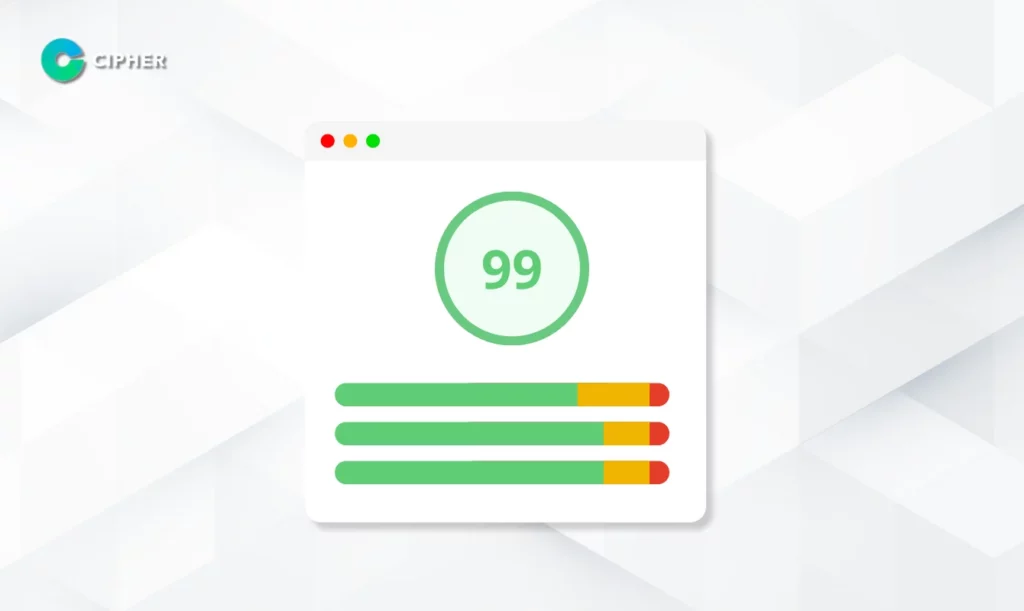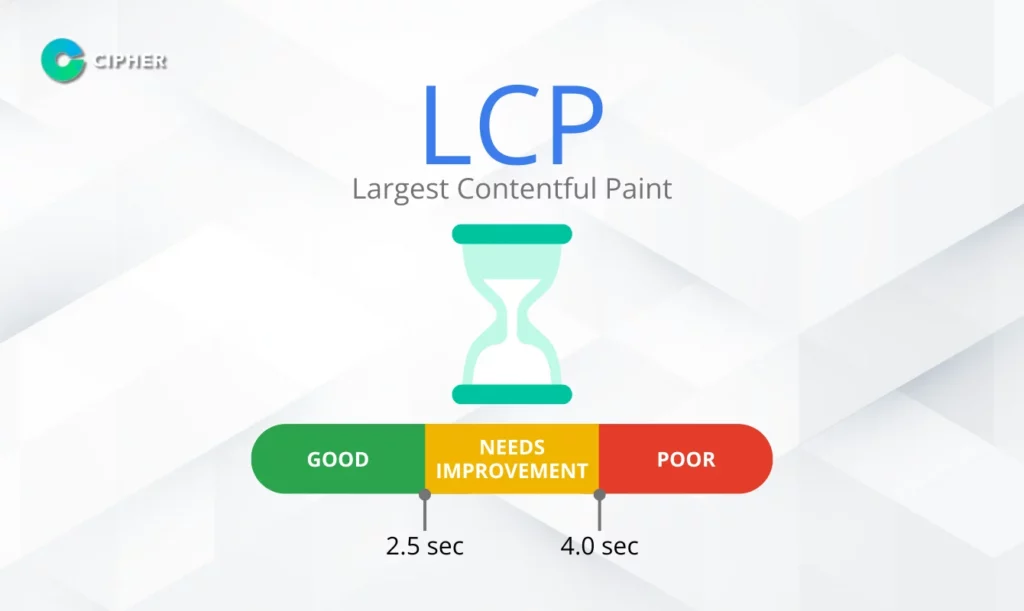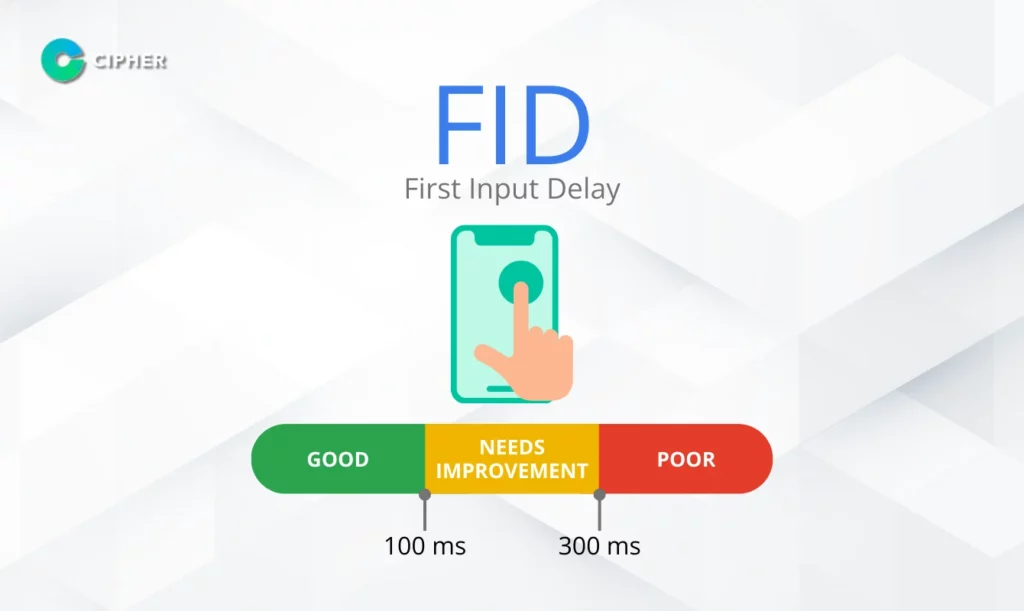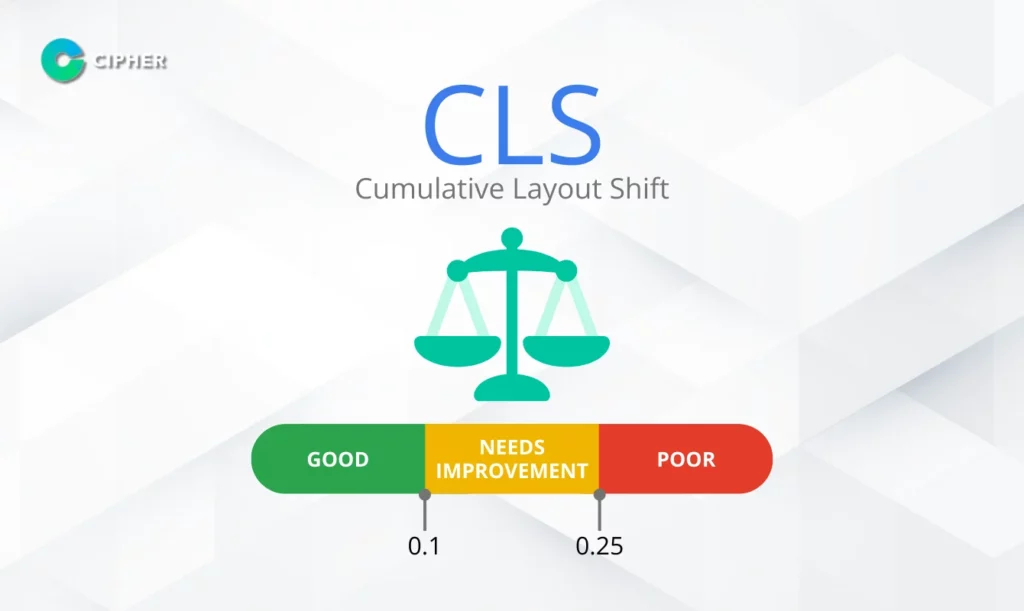Table of Contents
Core Web Vitalization is important for site owners who want to improve their Google user experience and rankings. In 2025, online competition has made Core Web Vital adjustments more necessary than ever. Google places importance on measuring website performance through a new standard Web Vitals that assess your web user experience. Properly resolved Core Web Vital sites provide businesses with greater visibility and access to their target audience. In this article, CIPHER will take you to understand Core Web Vital adjustments with a practical SEO service!
What is Core Web Vital?

Core Web Vitals is a collection of metrics that Google developed to evaluate the quality of its user experience (UX) on the website, which directly affects the ranking of search results. Efficient Core Web Vitals provide a fast, responsive and stable website when Google begins to use Web Vitals as a rating factor. As a result, web owners must pay more attention to UX/UI development.
Standardization of Core Web Vital not only improves Google’s ranking, but also increases visitor participation and conversion rate. When users have a good experience on the website, they tend to spend more time on the website and become more likely to become customers. This is why Core Web Vitals Update. Recently, there has been a lot of interest in making SEO.
What are Core Web Vitals?
Core Web Vitalization requires understanding of the three key components Google uses to evaluate Web Vitals. These key components cover the key factors that contribute to improving the website’s effectiveness and user experience.
Largest Contentful Paint (LCP)

LCP is the largest measure of loading speed on a web page, usually referring to large images or videos. Adjusting the Core Web Vital in this part is critical to making a good first impression on users. Google recommends LCP value not exceeding 2.5 seconds.
If your site has an LCP value too high, it may result in users leaving the site before the content is loaded. Web Core Vitals in this section can be improved by reducing the size of the image file, using efficient file formats such as WebP, and adjusting the server cache settings.
First Input Delay (FID)

FID measures how quickly it responds to the first user interaction, such as clicking the Enter form button or choosing one of the Core Web Vital adjustments menus. It is important to make websites respond quickly. Google says good FID should be no more than 100 milliseconds.
Core Web Vitals are important to improve the site. By reducing the number of unnecessary JavaScripts, decomposing large code sections and improving script performance, FIDs are improved. Web Vital sites in this area will make users feel that the site is responding in a timely manner.
Cumulative Layout Shift (CLS)

CLS measures Visual Stability on the website. Adjusting the Core Web Vital to a low CLS value means that the components on the website do not scroll around while loading. Google recommends a CLS value of not more than 0. 1 If you have experienced clicking on the button and scrolling button because of an ad or image load, this is an example of high CLS values. Specifying the size of the image and video in advance and avoiding adding content over existing content will improve Core Web Vitals in this area.
How does Core Web Vital check scores? ?
Effective Core Web Vitalization starts by checking the site’s current score to identify problems that need to be solved. There are several tools available to check your site’s Web Vitals. Both are popular tools.
- Google Search Console: Access to the Core Web Vitals menu will display a report on the performance of web pages in both mobile and desktop views, identifying problematic web pages that need improvement.
- PageSpeed Insights: Simply input a website URL, the tool analyzes and scores Core Web Vitals with updated instructions. It also displays user input and results from various usage tests.
Checking Core Web Vitals is something that should not be overlooked because regular monitoring allows you to track progress in improving and identifying other critical issues. After adjusting the Core Web Vital, follow-up should be continued to ensure that changes are beneficial to the site’s performance.
Simple Core Web Vitalization, no code editing required.
For those without coding knowledge, adjusting the Core Web Vital may seem difficult, but there are several simple ways to improve Web Vitals without the need to modify the code, such as:
- Compress images before uploading: Use online tools like TinyPNG or Squoosh to reduce image file size without significant loss of quality. Modifying the Core Web Vital in this section reduces loading time.
- Use plug-ins: If your site uses WordPress, plug-ins such as WP Rocket, LiteSpeed Cache, or Autoptize can be installed to easily improve website performance.
- Choose effective hosting: Good hosting has a significant impact on the speed of the website. Switching to high-performance hosting will help fix Core Web Vitals without code correction.
- Content Delivery Network (CDN): Using the CDN helps distribute the load of site content to the server closest to the user, reducing the time it takes to load the site.
- Remove unnecessary plug-ins: If you use CMS such as WordPress, remove unused plug-ins to reduce unnecessary JavaScript loading.
Remove unnecessary plug-ins: If you use CMS such as WordPress, remove unused plug-ins to reduce unnecessary JavaScript loading.
How much does Core Web Vital affect SEO?
Core Web Vitalization affects today’s SEO strategy because site scores are one of the key factors in website ratings. Core Web Vital revisions not only affect search engine rankings but also business performance.
In addition, a good user experience reduces the bounce rate and increases the average amount of time spent using the website. This is a positive sign that Google uses to rank. Therefore, Core Web Vital is a cost effective investment for businesses that want to increase their competitiveness.
Consult more about Core Web Vitalization with CIPHER today!
To help professionally adjust the Core Web Vital, a team of CIPHER experts is available. We have the experience of optimizing Web Vitals for a variety of businesses, helping to optimize your website’s performance according to Google standards.
Whether you want to improve your LCP, FID or CLS, we can analyze your website and provide appropriate guidance and address the problem. With the efficient Core Web Vital, you can see clear results in both Google rankings and user experience.
Contact us today for free consultation on Core Web Vitals enhancements and integrated web development services for your site!
Summary
Core Web Vitalization is an important factor for websites that want to succeed in the digital age by focusing on both LCP indicators. FID and CLS not only improve SEO ratings but also provide a positive experience for your site users. Effective Core Web Vital solutions require the right knowledge and tools available to help your business. Don’t let slow and unstable sites hinder business success.
Frequently Asked Questions (FAQs)
What is Core Web Vital?
Core Web Vital is a collection of quality metrics that Google uses to evaluate the user experience on the website, focusing on speed, responsiveness and stability of web pages. Effective Core Web Vital improves the ranking of websites in Google search results and provides a positive user experience, allowing them to spend more time on the website and become more likely to become customers.
What does Core Web Vital include?
Core Web Vitals consists of three main types of metrics: the Largest Contentful Paint (LCP) that measures load speed, the First Input Delay (FID) that measures interaction response, and the cumulative Layout Shift (CLS) that measures component stability. Core Web Vital adjustments need to be focused on metrics.
What's a good Core Web Vitals score?
Google’s standard good Core Web Vitals score is as follows:
- LCP (Largest Contentful Paint): not more than 2.5 seconds
- FID (First Input Delay): no more than 100 milliseconds
- CLS (Cumulative Layout Shift): น้อยกว่า 0.1
By adjusting the Core Web Vital to meet these criteria, your website will be effective in Google’s eyes and provide a great user experience.
How many types of Core Web Vitals are there?
Core Web Vitals consists of 3 main indicators:
- Largest Contentful Paint (LCP)
- First Input Delay (FID)
- Cumulative Layout Shift (CLS)
Effective Core Web Vitalization should consider both key and complementary indicators to improve the overall performance of the site.
How is Core Web Vital adjusted?
Adjusting the Core Web Vital can be done in several ways, depending on the problems encountered, such as:
- LCP enhancements: Minimize and compress images. Use faster WebP files, enable cache to reduce loading time, and minimize CSS/JavaScript size.
- Improved FID/INP: Reduce unnecessary JavaScript usage, isolate time-consuming tasks from Main Thread, and speed up script performance.
- Updated CLS: Pre-defined image and video sizes, reserve space for dynamically loaded ads or components, and avoid adding content that causes pages to be promoted.
Effective Core Web Vital solutions should begin by analyzing sites through tools such as PageSpeed Insights or Google Search Console to identify problems that need to be addressed, and then follow the recommendations and follow up on changes. For complex issues, Web Core Vitals may require the help of a Web Core Vitals expert. For optimal customization of your site.





